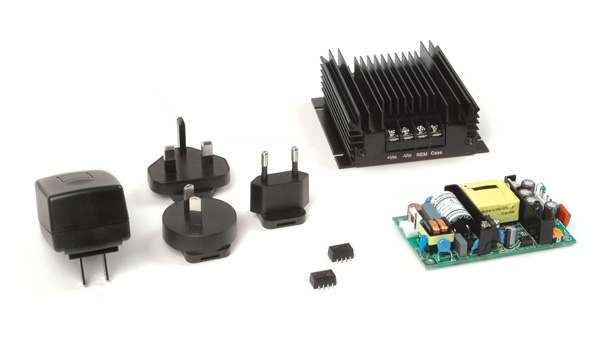MODULE OR DISCRETE POWER? An Age-Old Question with an Evolving Answer

Engineers today are feeling the pressure to get more done in less time, be experts in multiple disciplines, and use their resources more efficiently to maximize profits. This environment is shifting the way engineers approach finding solutions to their most pressing challenges; especially when it comes to the unavoidable necessity of power provision.
Most organizations today do not have the financial or engineering resources to dedicate an internal team to developing power supplies specific to the needs of each individual project. Instead, one of the project’s engineers is typically tasked (or burdened as is often the case) with finding a power supply suitable for the needs of the application. One common choice that the engineer faces in this situation is whether time should be spent developing a power supply from discrete components or utilizing a pre-designed module from an outside supplier. This is certainly not a new dilemma for the engineer but, as design cycles accelerate and applications across all industries demand more power in less space, the answer to this age-old question continues to evolve.
POWER DENSITY
One of the most noticeable tradeoffs between discrete power solutions and pre-designed modules is the space they consume and the associated power density they deliver. Power density is a measure of the number of watts of power converted per volume of space consumed; typically specified as watts per cubic inch (W/in3). Most industries today continue to demand equipment with more computing power, sensing capabilities, and feature sets. However, the space allocated to perform these tasks is not increasing and in many cases requires a reduction of space occupied. This is driving up the need for higher density and more integrated solutions; the power delivery system is no exception.
Off-the-shelf power modules are often optimized for size and are capable of delivering the highest number of watts in the least amount of space. As an example, Figure 1 below highlights CUI’s VOF‑180 series ac-dc power supply, which delivers a power density up to 30 W/in3 in a 2” x 4” chassis mount package.

On the other end of the spectrum are power supplies that are designed directly onto the system PCB with discrete components. In these solutions, there are often competing demands for space between the power solution and the rest of the system PCB functionalities. With power supplies requiring large and bulky components, it can be difficult to centralize all components in a board-level solution, resulting in much lower power densities. This is especially true when applications are designed with the intention of having components populated on just a single side of the PCB. Without the ability to utilize the reverse side of the system PCB, the discrete power solution will tend to spread out and consume valuable PCB real estate.
Under these circumstances, where the system PCB is restricted to having components populated on just a single side, pre-designed power modules can offer substantial space savings; especially if there is the vertical space available in the application to leverage the z-axis, which is the area perpendicular to the surface of the system PCB. This greatly increases the value of a ready-made module, which is optimized for size and provides a plug-and-play solution. Figure 2 below highlights the reduction in PCB area occupied as a design transitions from a single-sided discrete power delivery solution, to a double-sided discrete power delivery solution, and finally to a pre-designed power module, which is able to capitalize on space in the z-axis above the PCB.

DESIGN OPTIMIZATION
Engineers that design multiple discrete power supplies each year are likely to build-up a set of ‘go-to’ components that are well understood and trusted. However, for most engineers, the thought of designing discrete power supplies can be quite daunting and burdensome to implement in a timely fashion. As such, many engineers often turn to reference designs from various power component vendors in order to speed up the process. Power component vendors do what they can to help specify a bill of materials, layout recommendations and best design practices, but every application is different and often requires the engineer to deviate from the reference design in order to meet the performance, space constraints, thermal, or EMI requirements of their application. This carries the risk of running into complications; in terms of both cost and time, as well as performance.

As an example, a new application may only require a two layer PCB with 1 oz copper, but the chosen reference design for the discrete power solution recommends 4 layers of 2 oz copper. The option exists to double the PCB layers and double the copper weight of the entire application board, but this comes at a significant cost to the design. In addition, there is still the burden of time to carefully layout the power planes and optimize traces for the discrete components according to the controller vendor’s recommendations.
Ready-made power modules, by contrast, allow engineers to have the best of both worlds; they can design the system PCB using the fewest number of layers and the least amount of copper while leveraging the power module to simplify and optimize the power conversion needs. Instead of spending copious amounts of time tracking down all the discrete component vendors, laying out the power planes, keeping the feedback loop tight and quiet, and remaining diligent in keeping the switch node(s) away from sensitive analog circuitry, engineers can simply choose an appropriately-sized pre-designed module and focus their efforts on other tasks associated with their design.
A case in point is CUI’s PBO‑5 series of 5 watt ac-dc converters, shown in Figure 3. These compact modules provide straightforward board-mount solutions to convert ac line power into a dc rail for various electrical circuits (available in output voltages ranging from 3.3 to 24 Vdc). These PBO modules are UL and CE certified, offer a 3 kVac isolation voltage, and provide short-circuit and over-current protection all in a convenient ultra-compact SIP package.
DESIGN VALIDATION
Qualification testing and design validation of a power supply are additional factors that an engineer must take into account when deciding between a discrete or module solution. Performing all of the necessary validation testing for a discrete design is a non-trivial endeavor that will take considerable time and effort. An engineer could spend weeks designing and debugging the design, and the cost and timeline of the project will increase with every additional board spin that may be required. By contrast, off-the-shelf modules have been pre-tested, pre-qualified, and often pre-certified for the applicable safety and EMI standards that the power system will be required to meet. By selecting a pre-certified power module, the certification process of the end-application can often be expedited.
Another consideration when designing a discrete solution centers on the fact that, in nearly all cases, historical reliability and performance data is not going to be available to help analyze metrics such as yield and failure rate. This, in turn, injects another layer of risk into the design process. Modules, on the other hand, generally come with a traceable quality history available from the power supply vendor, allowing engineers to properly vet a pre-designed power solution before designing it into their application.
CONCLUSION
To be fair, pre-designed modules will almost always be more expensive than discrete implementations when looking strictly at a bill of materials. This is why many organizations developing high volume applications push their design teams toward this solution. Depending on factors such as target BOM cost, application requirements, and in-house capabilities, a discrete solution may very well be the ideal fit. However, when analyzing the cost of a design it is imperative to consider all of the associated resources, including design time, simulation time and tools, layout time, host PCB requirements, evaluation time and capital equipment costs in addition to BOM cost alone. For many companies, when projects are analyzed from this higher level, the use of ready-made power modules enables projects to be delivered to production in a shorter amount of time, with less risk, fewer worries and lower overall project costs. They may not be the answer for every application, but for the reasons mentioned above, power modules continue to gain favor in an increasing number of designs.
